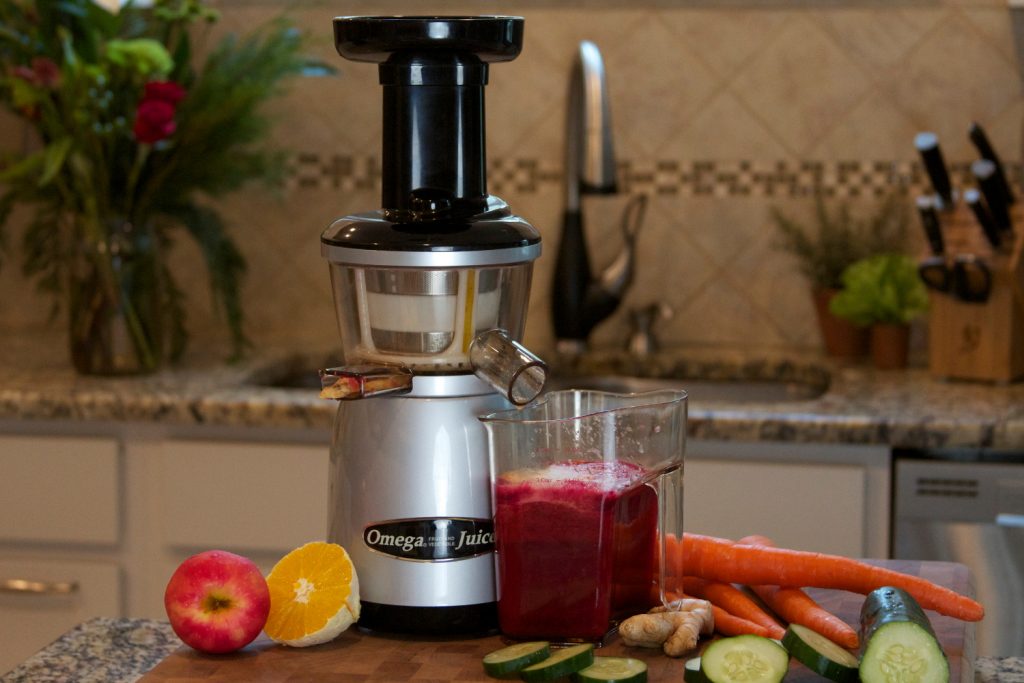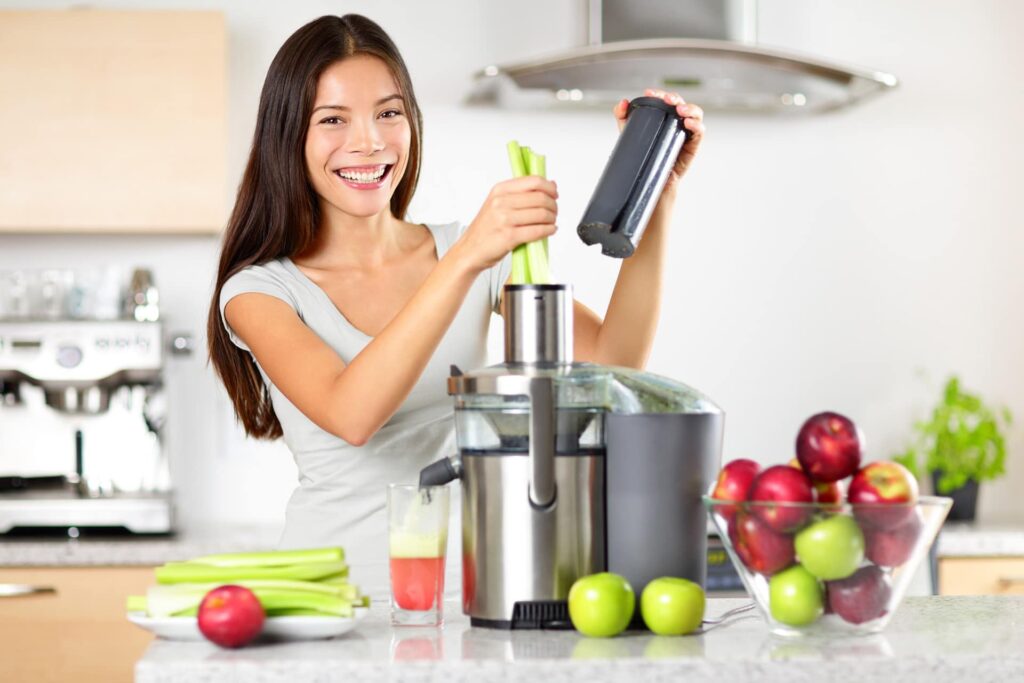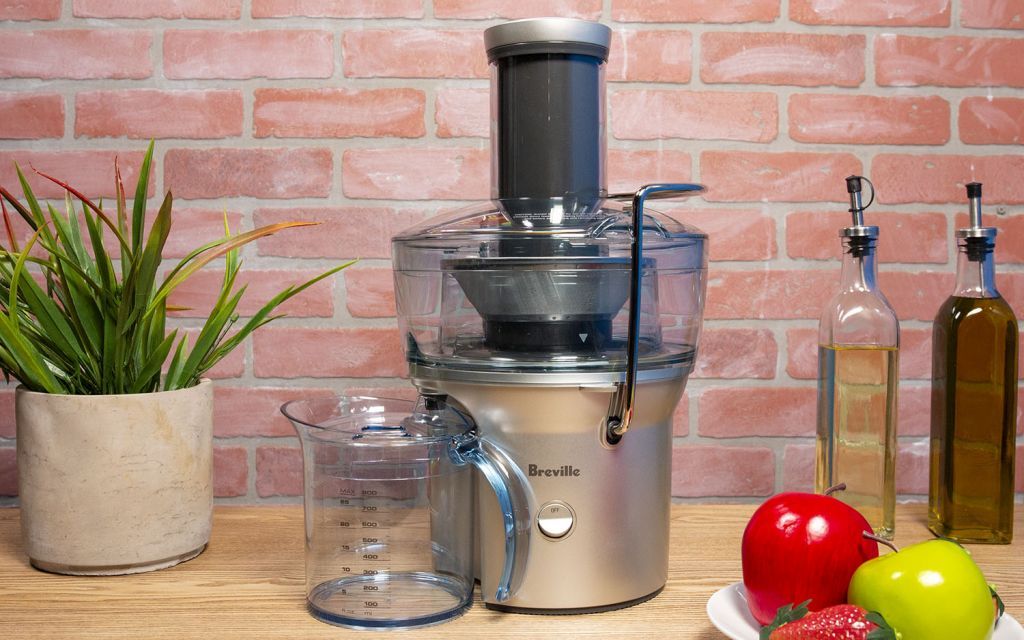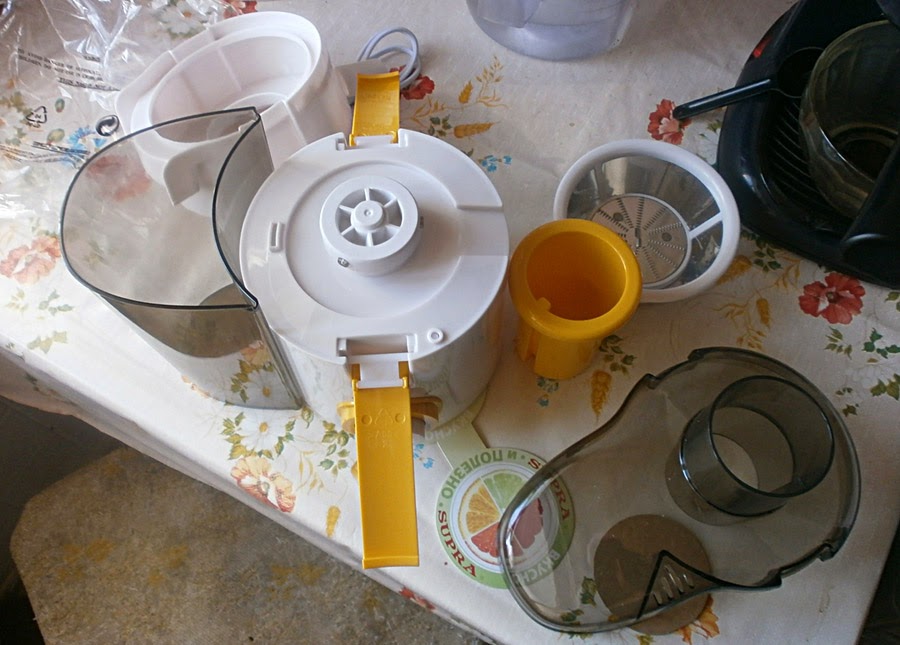Do you know that a glass of fresh juice a day affects your health as much as 7 servings of fruits and vegetables? A juicer comes here in handy. Omega is one of the most reliable juicer brands on the market today. It develops low-speed masticating juicers and juicing systems that extract up to 30% more juice than others and keep healthy components intact.
To find the best Omega juicers we reviewed more than 10 models and stopped at 5 with the Omega Extractor and Nutrition Center Juicer as our top pick. Our selection includes both horizontal and vertical juicers. A powerful motor is an important feature as it determines how much juice you can get. We included models with powerful 150W and 200W motors. Ease of cleaning is also important as you don’t want to spend hours cleaning your juicer. Adjustable settings are a nice bonus as they allow you to customize the juicing process to your needs.
With an extraction percentage of 76.8, the Omega NC900HDC is a favorite amongst many people. This juicer has a 150W motor which can turn even the hardest fruits and veggies into juice with little to no problem. With the auger system, the produce is grinded and then pressed to get the maximum amount of juice out. The Omega NC900HDC even has a bigger feeding chute which allows you to spend less time cutting and preparing the produce. Even though this juicer is pricier than others, it’s a long-term investment. The shell of the NC900HDC is made up of stainless steel, and wiping is sufficient to remove the leftover food. The Omega NC900HDC is relatively quiet compared to other Omega products. So, you won’t have to worry about waking up other people in the house early in the morning. This juicer also has five setting, adjusting from citrus fruits to tougher wheatgrass. And don’t forget that this is a juicing system and can produce much more than just juice! You can make soy milk, nut butters, baby food, and even pasta, all natural.
The Omega J8006HDS is another great slow masticating juicer. It’s a horizontal juicer so it can fit beneath kitchen countertops. Also, it’s relatively easier to clean than other masticating juicers. Because the juicer runs at such a low speed, it preserves the enzymes, nutrients, and vitamins in the juice better. It also features a dual stage processing, which maximizes the yield of any produce you might press, be it leafy greens or hard produce. The Omega J8006HDS does have a powerful motor and because of that, it’s susceptible to a bit of noise.
While cleaning the Omega J8006HDS is easy as you can just run water through it, to clean it fully, you’ll need to take apart the whole juicer. And the collection cup is a bit small, so you can only make one cup of juice at a time.
The Omega VSJ843S is a vertical masticating juicer. This is one of the slowest juicers in the Omega line, operating at just 43 RPM. The model features a twin winged auger, powering AWS (Automatic Wiping System) that rotates during operation to clear any pulp build up with silicone wiping blades from the juicing screen.
The style and shape of the auger is slightly different in order to accommodate powering the AWD. You may also notice that the juicing screen has a more compact design, with smaller mesh holes, so there is less pulp in your finished juice.
The auger and other plastic portions of the machine are made with heavy duty plastic that is eight times stronger than a typical plastic. Additionally, all components touching the juice or food are BPA free.
The juicer design also incorporates a juice tap. This allows you to mix juice or nut milk inside the extractor before it flows into your glass. You can also mix juice inside to remove more pulp from the liquid.
Masticating juicers typically operate at a lower noise level compared to centrifugal juicers, but this model is even quieter than other Omega masticating models. You will only hear a soft whir from the motor and any produce crunching.
In short, this is an excellent cold press juicer. It is a solid option for making any type of juice, including green juices. While it is a heavy machine, it is dependable and is supported with a generous 15-year warranty. So, you can feel confident of many years of juicing with ease.
The Omega J8007S has a 2-hp motor, which allows it to process all kinds of produce, from soft to hard and even leafy greens. By having a powerful motor, it operates at 80 RPM, which ensures that the juice extraction is efficient while also saving the vital nutrients and vitamins. The Omega J8007S also has an automatic pulp ejection which allows you to juice to your heart’s content without having to stop to clean. It has a larger food tray, so it’ll be convenient for you to juice. It’s relatively easy to put together and its parts are safe to be put in the dishwasher. The box even comes with a cleaning brush that can be used to clean and dislodge stuck pulp.
However, some pulp can get into the juice, so you might have to strain the juice if you prefer less pulp. It also requires the vegetables and fruits to be cut before being juiced, so prepping time is longer.
As the Omega VRT350 is a masticating juicer, it uses a single auger instead of fast spinning blades to slowly crush and squeeze the fruits and get maximum yield. It’s also a dual stage juicer. It first presses the fruits, extracting the juices and then removes the pulp from juice. Because the Omega VTR350 is a vertical juicer, it is way easier to push the produce down. Unlike centrifugal juicers, this masticating juicer doesn’t rely on the speed of its motor so there’s no loss of nutrients because of heat. The Omega VRT350 also has a self-cleaning function. This juicer works best when juicing harder produce such as apples, pears, radishes and carrots, radishes – if these are the main products that you’ll be juicing, then finding a juicer for carrots will be the best addition to your kitchen!
While it does give good yield on other produce as well, with leafy greens the Omega VRT350 leaves behind a wetter pulp. And, with more fibrous vegetables like kale, leeks and onions, this juicer has a chance to get clogged and your juice might have some pulp.
While scouting the market for different types of juicers, you have to factor in all your different needs and ponder about several important questions. Why do you even want a juicer? How often do you plan to use it? What type of features do you want it to have? If you’ve even vaguely thought about these attributes, then we’re already halfway there. Rest assured, with this buying guide, we’re here to help you find the perfect juicer that meets all your needs.

The juicers that are currently in the market can be categorized into either fast juicers or slow juicers. Fast juicers, known as centrifugal juicers, process produce quickly. These juicers have spinning blades that spin against a mesh filter, which separates the juice from its body. The produce is separated into different containers containing the juice and the pulp. Centrifugal juicer is very quick at producing the juice and even has different speeds for different types of produce; however, it tends to create quite some noise.
[wpsm_box type=”green” float=”none” text_align=”left”]Slow juicers, known as masticating juicers or cold press juicers, process produce slowly. Vertical juicers, horizontal juicers, twin gear juicers, hydraulic press, all fall under masticating juicers. All of the juicers we have reviewed are masticating juicers. This type of juicer uses a slow rotating auger and a screen to crush and press the juice out of ingredients. Although it functions at a slower speed, it operates with less noise and extracts higher yield of juice from the same amount of ingredients than centrifugal juicers.[/wpsm_box]
The right juicer for you will also depend on how often you plan to juice. If you are a busy individual and want a fresh glass of juice every day without any fuss, then you should pick a juicer that is easy to clean and produces less amount of waste. So, we recommend that you opt for a masticating juicer if you plan to juice often and for a longer period of time.
Depending on what you want to make juice from, the types of juicer perfect for the job will vary. If you plan to use leafy greens and wheatgrass, horizontal single auger juicers are the best. Instead, if you plan to use hard fruits and vegetables, both masticating and centrifugal juicers are good for that purpose. And if you plan to use soft fruits, then vertical slow juicers give the best results.
The high-speed action of centrifugal juicers creates heat which tends to destroy enzymes in the fruits and vegetables. Because the plant cells are broken down quickly with the use of oxygen, your juice will easily discolor. The oxidation and denaturation of enzymes break down nutrients so nutritional quality and yield are compromised with centrifugal juicers. The best Omega masticating juicers, on the other hand, use a slow grinding and chewing action to break down the ingredients and operate at 80 RPM or even less. During juicing, they do not incorporate heat so more of the ingredients’ nutrients are retained. This is essential if you’re looking to juice vitamin-rich greens: for example, Omega juicers are some of the best juicers for wheatgrass.
Juicers that are easy to take apart and clean are more preferable to ones that aren’t. Because of its design, a masticating juicer is easy to take apart for cleanup while cleaning the centrifugal juicer can take quite some time. Some models of masticating juicers even have innovative self-cleaning systems that prevent pulp build up.
[wpsm_box type=”red” float=”none” text_align=”left”]Most models of centrifugal juicer do not process all types of fruits and vegetables so pulp and fibers get stuck easily, making it difficult to clean. If time spent on cleanup is something you are concerned about, then it is worth it to purchase the masticating juicer.[/wpsm_box]
Although the price for the juicer will depend on the model and the number of features, centrifugal juicers often cost less than masticating juicers. Centrifugal juicers cost anywhere between $40 to $250 while masticating juicers tend to start around $200 and some high-end models even cost up to $1000. Because centrifugal juicers are more prone to defects, they typically only have 1 or 2 years of warranty. Masticating juicers have a very long warranty period, often 10–15 years.
With so many models available in the market, it can be quite difficult to find the most suitable juicer that meets all your requirements. Whether you value price over durability or functionality over ease of cleaning, after reading through our guide and our comparison list, we hope we have made it easier for you to make a decision on what would be the best juicer that can satisfy all your needs.





